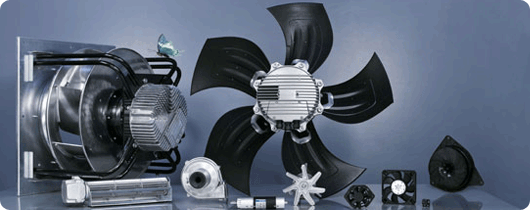New S-Force fan range, diameter 200 mm

65 % higher cooling density with less energy consumption
To keep up with the new demands for efficient heat dissipation, even for highly compact devices, the fan experts at ebm-papst in St. Georgen, Germany, have developed a new axial fan series. In doing so, the primary emphasis was placed on a compact design while simultaneously increasing the air flow. Therefore, the new 2200 series is in line with the trend towards compact solutions that are accompanied by an increase in performance.
Technical basics
In its installation-related outer diameter and pitch circle of the fastening eyes, the new 2200 FTD is sized identically to existing fans. Thus it can be easily retrofitted to existing mounting holes. Though the outer dimensions have remained the same, the rotor, and thus the "active" rotor surface important for moving air, are larger than previous common versions. The advantages of the new development are likewise clear when it comes to installation depth. Rather than 70 mm, the new fan requires only 51 mm of space for the housing, rotor and motor. The reduced installation depth improves the air flow in the housing; the air intake resistance is decreased while the actual flow rate is increased. Moreover, the aerodynamic improvements of the flatter design mean an air flow that is some 30 % greater, and thus it has about 65% higher cooling density than existing fans with comparable size and a 70mm overall height. These advantages of internal air conduction also contribute to the significantly lower operating noise levels at all operating points. The Ecodrive motor with an efficiency of over 85 % also contributes to the high efficiency.
Real-world applications
The numbers show the full potential of the development. The operating noise level is a maximum of 72 dB(A). Thus the new fan is particularly suitable for the compact applications in the IT and telecommunications areas and in control cabinet cooling. In addition to these classic cooling applications, the high power density allows use in applications such as printing machinery or frequency inverters as well as those in the air-conditioning and automation fields, which previously required the use of larger units.

